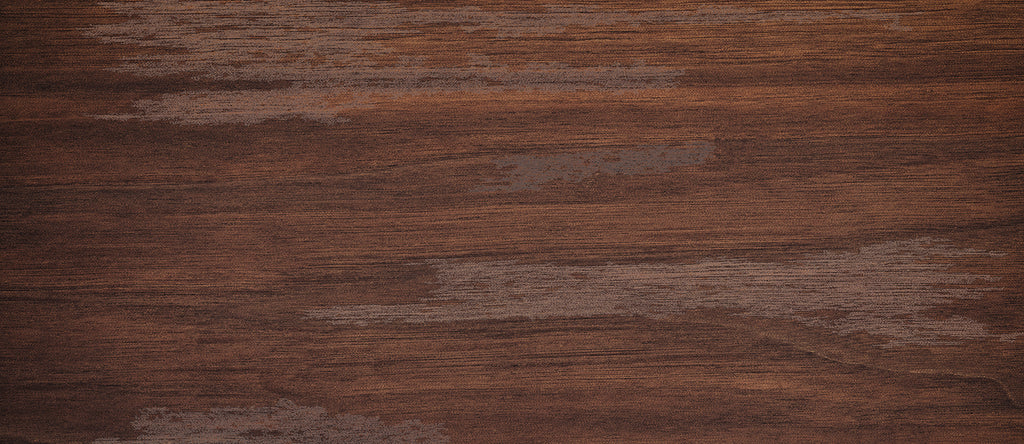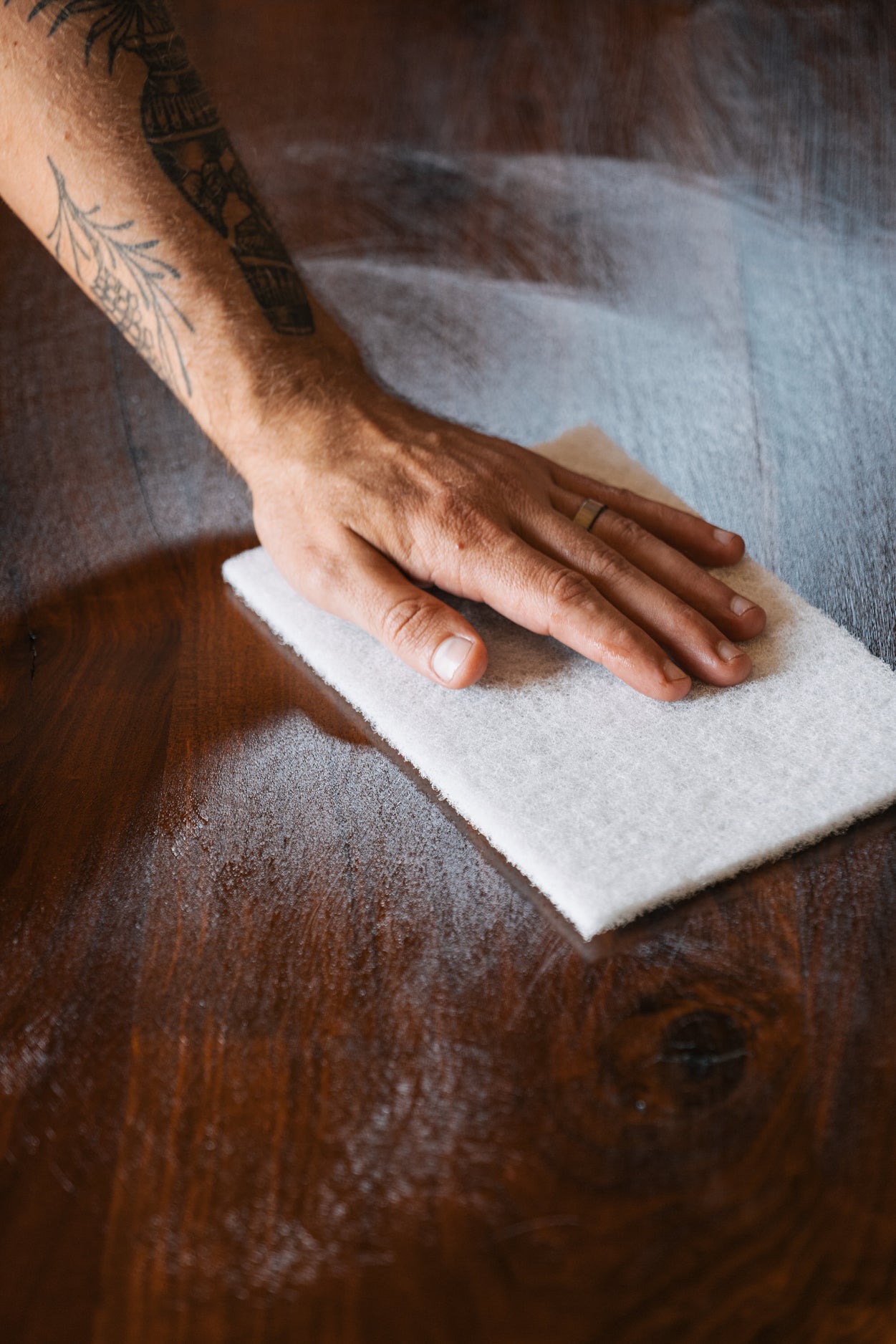
Splotchy Finish - occurs when a wood surface finish has visibly uneven areas during or after curing, due to anomalies preventing even surface curing or polymerization. There are five primary causes of splotchy finish explained below and how to avoid and/or fix it.
Excess Wood Finish and Lack of Buffing is the Most Common Cause of Splotchy or Blotchy Finish

-
Excess Finish - when too much wood finish is applied, and the surface lacks uniformity in its polish, excess areas will polymerize, resulting in an uneven appearance. This is the most common cause of splotchy finish and is more prone to happen with wax-based wood finishing products. It can look like white spots or raised areas, but it's actually excess wood finish that's hardened on the surface. To prevent or fix this, gently brush the entire surface with an 800 grit Nonwoven Sanding Pad until the finish appears even. Then, use a non-abrasive Polishing Pad to buff away any remaining wax particles. Repeat steps until surface appears even consistently for a week. Removing excess finish will also minimize the risk of water rings and white spots in the future.
-
Improper Surface Prep - sanding too low or too high can be problematic for the first coat of finish. For the initial coat, we suggest applying it to a surface sanded at 220 to 320 grit. Applying the first coat to a surface sanded too low results in excessive absorption, requiring more finish for an even look. Conversely, if applied to a surface sanded too high, the finish sits on top, leaving the wood uneven and insufficiently protected. Additionally, always make sure the surface is clear of glue, timber paint, and other foreign residues.
-
Incompatible Finishes - applying separate coats of finishes that are not compatible, such as an initial coat of oil-based wood finish and then a second coat of water-based stain. We strongly advice against using oil-based wood finishes with water-based wood finishes. Nonetheless, this type of situation can be prevented by using a test board before applying the various finishes to an entire project. If the test board feels sticky or looks uneven, the finishes are likely incompatible.
-
High Solvent Concentration - adding an excessive amount of solvent to a finish can cause certain areas to evaporate more than others, leading to an uneven finish. Prevent this by either abstaining from solvents entirely or incorporating no more than 25% solvent when mixing with a finish.
- High Wood Moisture - excessive moisture in wood can prevent the finish from polymerizing evenly or prevent polymerization entirely. Before starting a project, make sure the wood has been properly kiln dried or air dried and has an average moisture reading of 10% or less.

